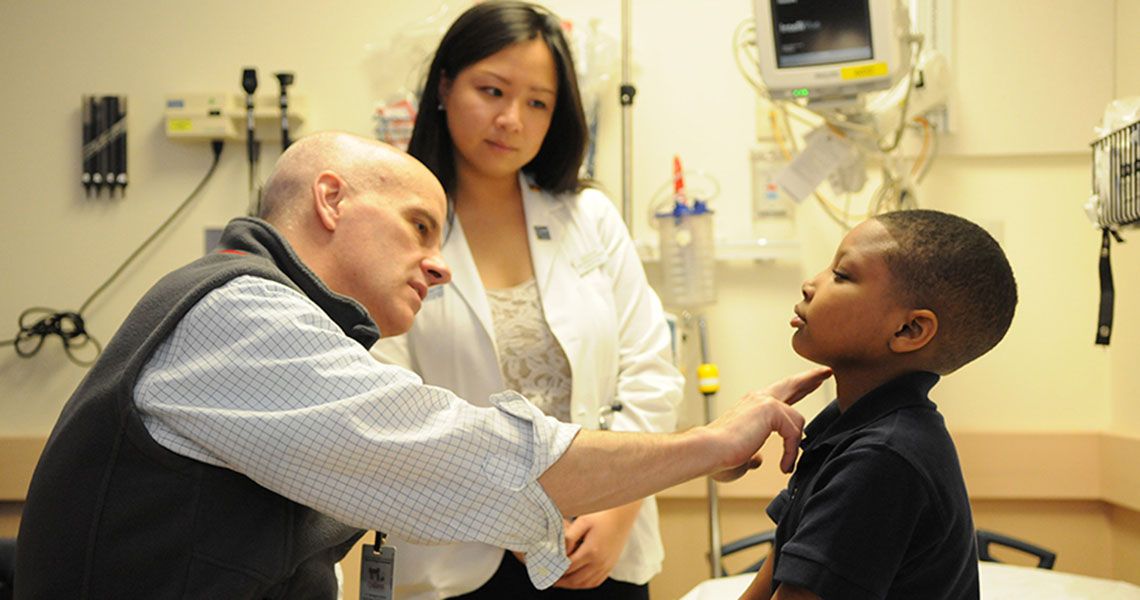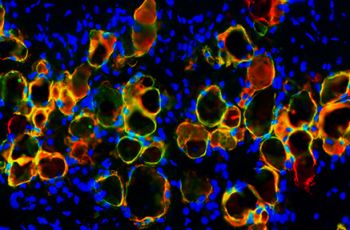As winter winds down and spring readies its return, people may begin to see allergies that lay dormant in the colder months’ re-emerge, and asthma flare-ups may rise.
What is asthma, what allergens are most common, and who is impacted by these conditions?
Stephen J. Teach, M.D., M.P.H., chair of the Department of Pediatrics at Children’s National Health System and professor of pediatrics and emergency medicine at the GW School of Medicine and Health Sciences (SMHS), says asthma is a complex disease manifested by a genetic pre-disposition to the disease and certain environmental modifiers, such as exposure to allergens, viral infections, and psychosocial stress.
“Before puberty, asthma is much more common in little boys, and most typically dark-skinned little boys who have severe episodic flare-ups of asthma from time to time,” said Teach, who also serves as the director and principal investigator of IMPACT DC (Improving Pediatric Asthma Care in the District of Columbia), as well as his role as principal investigator for the NIH/NIAID-funded Inner City Asthma Consortium.
There are many different disease processes associated with allergies and asthma, and each person’s unique genetic makeup and environmental context can lead them to be more or less susceptible to asthma than others, Teach explained.
As children reach puberty, he added, asthma often partially remits or goes away all together. However, when it comes to girls and young women the reverse can be true.
During the onset of puberty in young women, “you’ll often see the onset of respiratory symptoms consistent with asthma, and more typically that’s a little bit more democratic with respect to race,” Teach said. “That tends to be associated with high body mass index and tends to be a little less allergic in nature.
“We don’t know exactly why that is,” he added, “but it probably has some interplay of a genetic predisposition, since this tends to run in families, with hormonal influences arising after puberty.”
Q: Are there common allergens that make asthma worse?
A: Absolutely. There are two distinct groupings of allergens. There are the perennial allergens, the year-round ones. Those tend to be indoor allergens — dust mites, cats, dogs, mold, rats, mice, and cockroaches. And unfortunately those perennial allergens disproportionately affect children who are most at risk for bad outcomes, which are disadvantaged and often minority kids living in poor housing. Those allergens … are the biggest problem when a kid is sensitized to them, exposed to them, and then gets a viral infection. That’s why kids get so many asthma flare-ups in the fall. They go back indoors, they’re already sensitized to the allergens, and they go back to school and catch the common cold.
The second group is the seasonal allergens; those are what tend to be associated with flare-ups of asthma in springtime. The big one is tree pollen, then you move into the grasses over the summer, and in the fall it’s ragweed.
Q: What is the relationship between allergies and asthma?
A: They’re all close relatives. People talk about what’s called the “atopic march.” You start with eczema, then develop food allergies, and then wheezing, asthma, and nasal and ocular allergies. It’s something that starts in infancy and tends to occur in families. If you see children with episodes of wheezing early in life, who have a history of food allergies and eczema when they are young, and their mom has asthma, the odds they will grow to have asthma as school-age children are extremely high.
Q: How would a parent know if a child has asthma, or if it’s just allergies or another illness?
A: A child who’s audibly wheezing and has labored respirations should be evaluated by a clinician on a fairly urgent basis. Children who cough a lot, particularly if they cough in the absence of post-nasal drip and in absence of cold symptoms, should be evaluated as well. Children who cough or have excessively labored breathing during exercise also should be seen right away. In addition, children who have a family history of asthma and who cough or have labored breathing also should be suspected of having asthma.
Q: What’s the future in asthma treatment and care?
A: The future is in prevention. We think 1,000 years ago that asthma was pretty uncommon, and it’s probably because children grew up very close to the earth. They grew up with germs and fecal matter and close to animals, and the immune system was designed to develop over time in a way that enabled children to fend off infections without resulting in allergies and asthma. But as we’ve moved further from the earth and spend more time indoors and less time around animals, the immune system develops in a more abnormal way, and you see high rates of allergy and asthma.
So where do you go with that? If we could try to capture the positive sides of early exposure to bacteria, germs, and dirt without the negatives of it; then we could have our cake and eat [it] too.
We’ve started an exciting study where we take kids at risk of asthma on the basis of having eczema or a family history of asthma, and we’re seeing whether exposure to a probiotic-like substance that will train their immune system to develop in a less allergic and more normal fashion.



